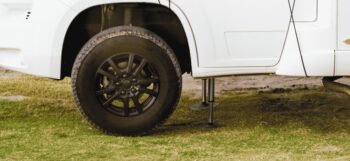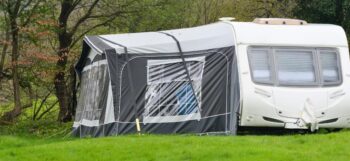Moving a static caravan from one site to another can be complex. Unlike touring caravans, static caravans aren’t built for regular travel, and their size, weight, and design can make relocation challenging.
If you're moving to a new site for a change of scenery, taking ownership of a pre-owned caravan, or your current park is closing, it's important to understand what's involved. This guide explains how to relocate a static caravan safely and legally, what preparation is needed, and what costs to expect along the way.
Why might you need to move your static caravan?
You might want to relocate your static caravan if:
- You’ve just purchased a pre-owned caravan: If you've bought a second-hand static caravan that’s already sited, you may need to arrange for it to be transported to your new park.
- Changing sites for location or facilities: You might be looking for better amenities, more desirable surroundings, or a park closer to home. Some owners also move to take advantage of more cost-effective site fees.
- The current site is closing: Sometimes, caravan parks may shut down or change their terms of use, meaning all caravans on-site need to be relocated or removed.
- Selling your caravan to a new owner: When ownership changes, the new buyer might want to relocate the caravan to a different park or storage facility.
Disposal or storage: If you're no longer using the caravan, it may need to be moved for scrapping, long-term storage, or off-site disposal.

How to move your static caravan
Moving a static caravan isn’t something most owners can manage on their own. These caravans aren’t designed for moving frequently, and their size means you’ll often need specialist equipment. Usually, you’ll need to hire a professional transportation company experienced in moving static caravans.
Here are key stages to help you understand what’s involved.
Preparation
Before your static caravan can be moved, you’ll need to make sure it’s ready for safe transportation. This includes:
- Disconnecting from all utilities such as water, gas, and electricity
- Draining any water tanks to prevent leaks or water damage
- Removing loose items such as ornaments, kitchenware, or small furniture
- Securing any fixed furniture or fittings that could move during travel
- Locking all doors and windows securely
- Checking that tyres (if fitted) and any towing mechanisms are in suitable condition
Transportation
Static caravans are usually moved by specialist hauliers using a flatbed or low-loader trailer. It's not something that can be done with a standard vehicle. Depending on the size and width of your caravan, certain legal requirements may apply.
According to UK road safety regulations, any load that exceeds 3.05 metres (10 feet) in width is classed as a wide load. This means you’ll need to take additional precautions, including notifying the police at least two working days in advance and using appropriate marker boards. Caravans wider than 3.5 metres also usually require an escort or attendant to travel safely on public roads.
The transportation company will typically manage these requirements for you, including route planning, permit applications, and providing escort vehicles where needed.

How much does it cost to transport a static caravan?
The cost of moving a static caravan depends on several factors:
- Distance: Longer journeys typically cost more, especially if permits or escorts are required.
- Size and weight of the caravan: Larger caravans may need additional support vehicles, which can mean higher fees.
- Access at both sites: Difficult access, tight turns, or uneven ground may require extra handling or equipment.
- Professional haulier fees: These can include transport, loading/unloading, and escort vehicle costs.
- Site fees: You may need to pay a siting fee at the new park, as well as reconnecting to water, gas, and electricity.
- Insurance: Insurance cover during transit can also be worthwhile to help protect against accidental damage.
As a rough guide, moving a static caravan to somewhere in the UK can cost anywhere between £300 and £3,000 . It can cost even more depending on the specifics of the move. It’s always worth getting a detailed quote from a trusted transport specialist before deciding to move your caravan.
How easy is it to move a static caravan?
Relocating a static caravan isn’t always a straightforward task, but with proper planning and the right help, it can be managed smoothly. The overall complexity depends on factors like the size of the caravan, how far it needs to be moved, and how accessible both sites are.
Difficult terrain, narrow roads, or limited access points can make things more complex, especially for larger caravans. Longer journeys may also require careful route planning, permits, or escort vehicles if the caravan qualifies as a wide load.
This isn’t a job for a general transport service. Using a company with experience in caravan relocations helps to ensure you meet all safety and legal requirements. Their expertise can make all the difference between a smooth relocation and a costly setback.

Checks to make after relocating your caravan
Once your static caravan has arrived at its new location, it’s important to carry out a few essential checks before settling in. Transport can occasionally cause minor issues, especially over longer distances or more difficult routes.
Here are the key areas to inspect:
- Exterior condition: Look for any signs of damage to the roof, guttering, cladding, windows, or doors. Pay close attention to seals, joints, and panels which may have been affected during transit.
- Chassis and anchors: Check the chassis for any cracks, rust, or signs of strain. Ensure anchoring systems are reinstalled correctly if your caravan is sited on a plot exposed to strong winds.
- Pipes and connections: Reconnect water, gas, and electrical supplies following manufacturer or site guidance. Look for any leaks, blockages, or issues with pressure.
- Levelling: Check the caravan is level front-to-back and side-to-side. An uneven base can affect stability, drainage, and appliances.
- Interior fittings: Check that internal features like cupboards, doors, and windows open and close properly. If furniture was secured before the move, ensure nothing has shifted or loosened.
- Security and safety systems: Test alarms, locks, smoke detectors, and carbon monoxide monitors to ensure everything is in working order.
The importance of insuring your caravan before, during, and after transportation
Relocating a static caravan involves various practical and logistical steps, and it can carry risks, especially damage. Having insurance in place can help give you valuable protection against something unexpected.
At Lifesure, our static caravan insurance helps to protect your holiday home and belongings while it’s located on-site. If you're planning to move to a new park or location, it may be worth reviewing your cover is suitable to help your caravan stay protected.
Fill in our online form to get an instant quote or call us on 01480 402 460 and one of our advisors can help.
Disclaimer: The sole purpose of this article is to provide guidance on the issues covered. This article is not intended to give legal advice, and, accordingly, it should not be relied upon. It should not be regarded as a comprehensive statement of the law and/or market practice in this area. We make no claims as to the completeness or accuracy of the information contained herein or in the links which were live at the date of publication. You should not act upon (or should refrain from acting upon) information in this publication without first seeking specific legal and/or specialist advice. Arthur J. Gallagher Insurance Brokers Limited trading as Lifesure accepts no liability for any inaccuracy, omission or mistake in this publication, nor will we be responsible for any loss which may be suffered as a result of any person relying on the information contained herein.
FP710-2025











